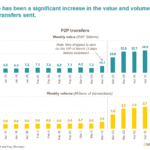The Wild West of ESG Reporting: A New Report Finds a Disturbing Lack of Standards and Transparency
Environmental, social and governance (ESG) reporting has become a branded megatrend in capital markets, as businesses across the world have embraced it as a key indicator of responsible corporate citizenship and an important part of attracting investors.
The numbers involved are enormous.
According to the Forum for Sustainable and Responsible Investment’s 2020 trends report, between 2018 and 2020, sustainably invested assets under management grew by 42% to $17.1 trillion in the U.S. alone. That represents 33% of the country’s total $51.4 trillion in professionally managed assets.
In Europe, ESG investment numbers are even higher, with the European Fund and Asset Management Association reporting that as much as 45% of assets under management in the countries covered in the report were invested using ESG selection strategies, as of the end of 2019.
Companies are focused on ESG because of the gravity of the multiple social issues the world is facing, and the demand for sustainable operations from investors. This demand is typified by Norway’s Norges Bank Investment Management, which is the world’s largest sovereign wealth fund with over $1.1 trillion in assets, and which owns an average of 1.4% of all globally listed stocks. The fund has been increasingly vocal about ESG as investment criteria and has been actively divesting companies with poor ESG performance.
But all this attention — and the trillions in investment — is based on a reporting system that is really no system at all.
The Lack of Standards and Transparency in ESG Reporting
The recent publication of a unique new survey of corporate reporting shows the extent of this challenge. The Global ESG Monitor (GEM) is an international partnership between cometis AG and KOHORTEN (Germany), Currie (Australia) and Xenophon Strategies (U.S.) — where I serve as CEO. The report looked at the track record of global companies in major indexes, including the Dow Jones Industrial Average, Europe’s EURO STOXX 50, Germany’s DAX Index and Australia’s ASX 50. Overall, the study assesses the ESG reports of 140 of the world’s biggest and most influential companies, employing a variety of research techniques and quality-evaluation criteria to produce a GEM Rating. In the process, it found a disturbing lack of standards and transparency.
For example, in the Dow Jones, financial reports from 19 of the 30 companies were in the bottom 50% of all those studied, with McDonalds and JP Morgan Chase scoring only slightly higher than Honeywell and Microsoft, which were tied for dead last. Microsoft barely managed to garner three points based on the 66-point evaluation criteria that looked at basic levels of transparency, comparability and reliability.
“The problem is, we don’t really know what these companies are doing on sustainability because of dismal transparency in how they report,” said Michael Diegelmann, CEO of cometis AG, a German investor-relations and ESG consultancy. “Data shows companies that prioritize non-financial ESG goals can outperform their peers financially. Yet too often the fundamental details that corporations choose to report, how they report it, where they report it, and even who exactly is responsible for sustainability is left out of the official ESG documents used by investors. The lack of comparability makes it nearly impossible for investors to accurately judge what’s happening.”
The Problem with Rating Agencies
Many ESG-branded financial products rely on the assessments of specialized ESG rating agencies like Sustainalytics, MSCI, ISS or RobecoSAM, making it important for companies to have a good rating to be included in ESG-weighted indexes or other “green” financial products. The judgments and numbers from these rating agencies are processed individually or in groups and used by index providers, proxy advisors or asset managers, and then marketed in the form of sustainable investment products.
A problem with rating agencies is that they use proprietary algorithms to scan publicly available corporate information, upon which their ratings are based. According to numerous discussions with rating agencies, roughly 75–80% of algorithm-collected corporate data is based on self-reported data — and these algorithms do not measure the transparency and traceability of this data, because it comes from a variety of sources which are most often not independently audited. If information is not audited and does not adhere to widely used standards, it is easily changeable and can be altered on a whim by the issuing company.
This can lead to confusion about how much progress a company is making toward its ESG objectives. For instance, one of the reasons that Microsoft scored so poorly in the GEM study is not that they were not doing ESG work, but rather that they were not consistent in how they report it. Microsoft data is reported on a variety of websites, without adhering to an established set of criteria or using data that can be compared to other companies.
The GEM took these challenges into account in gathering the data it analyzed. An important source of ESG data is a company’s non-financial report, which is either integrated into its annual report or published as a separate sustainability report. The GEM evaluated and compared sets of data from both these reports, for companies in similar large-cap indexes in Europe, the United States and Australia. It analyzed topics such as stakeholder dialogue, and the use of frameworks or quality criteria such as data measurability, adequacy of reporting and reliability of presentation. The GEM also explored whether these companies utilized superficial vs. deep information, based their assessments on assertions vs. evidence, and relied on subjective statements like promises vs. creating integrated, evidence-based ESG strategies.
Moving Towards Greater Transparency in ESG Reporting
Global NGOs like the Value Reporting Foundation, Sustainability Accounting Standards Board and the Global Reporting Initiative define non-binding reporting standards. But without binding rules, there can be no sanctions, and there will continue to be widely different interpretations of ESG transparency.
In the past few months, the U.S. Congress and the Security and Exchange Commission (SEC) have started to move towards regulations and rules in ESG reporting. On June 16, the House of Representatives passed legislation to require public companies to disclose ESG metrics and the connection to the company’s long-term business strategy; the bill’s fate in the Senate is unclear. The SEC has also begun the process of developing ESG disclosure regulations.
A key pattern that GEM analysts observed was that for many corporations, the ESG reporting processes were, at least partially, geared toward creating a justification for inclusion in “sustainable” or “socially responsible” financial products. This pattern is alarming because investors rely on ESG reporting to make investment decisions that meet their social goals. Arbitrarily reported information based on unknown criteria that is not comparable or based on widely accepted standards of quality and transparency means that we are still in the “Wild West” stage of ESG reporting.
A key finding of the GEM shines a bright light on this lack of global reporting standards: Only 27% of companies provide any reporting methodology, and even fewer (19%) provide formulas, research methods or calculation methods showing how their ESG data was gathered. The study also reveals that less than 41% of companies demonstrated transparency on previously stated ESG objectives that had not been met.
Clearly, the Global ESG Monitor report shows that although the corporate world has embraced ESG reporting, the lack of binding standards and a commitment to transparency means that investors can have little confidence in ESG corporate data. Instead, they must rely on blind faith that reporting is open and honest — both about the information reported and the methods used to generate it. After all, ESG reports are meant to gauge a company’s actual progress toward more sustainable and responsible practices — not to better its position in the financial markets.
The next GEM report data released in the spring of 2021 is scheduled for publication in September 2021. Reports and rankings are publicly available from the Global ESG Monitor.
Editor’s Note: This article was voted by readers as one of NextBillion’s Most Influential Articles of 2021.
David A. Fuscus is the CEO of Xenophon Strategies, Inc. in Washington, DC, and the firm is one of the founding partners of the Global ESG Monitor.
Photo courtesy of ElisaRiva.
- Categories
- Impact Assessment, Investing



